8 steps for starting a digital commerce business
Starting a digital commerce business may seem a bit daunting. To help guide you through the whole process, we’ll point out 8 crucial steps you need to take to start your digital commerce business.
If you’d like professional help during this new exciting journey, feel free to reach out to us! We’re experts in building integrated eCommerce solutions. We’ve got the know-how and the experience – all we need is your idea!
To help with your next big idea, we’ll guide you through the process of building a digital commerce business – in 8 simple steps.
So, let’s get started!
Step 1: Analyze the industry
If you’re trying to position yourself in a specific industry, you’d want to research the industry as much as you can.
You’ll want to know the size of your industry, its growth rate, and what are the latest trends. To find out that information, you can check out some of the authoritative sources such as:
These are just some of the major sources you’ll soon encounter.
But first, there is one thing you’ll want to do first. A specific Google search.
A good thing to remember here is – the more specific your question, the more specific is your answer.
For instance, you’ve created an online cooking course and you want to share it with as many people possible. You’re determined on your mission of improving your customers’ cooking skills and there’s nothing that can stop you.
What can you Google to get some answers to your questions?
You could start with “online cooking course consumer trends”. That’s a pretty specific search and it will definitely help you. Try Googling it!
If you’re still catching up with the industry you’re starting your digital commerce business in, try reading as many industry articles as you can.
By doing that, you’ll have a grasp on the industry and where it’s heading. Remember, you’re building a business that’s going to last for years.
Be sure to know what kind of industry you’re getting in! To identify some trends, Google has a perfect tool – Google Trends!
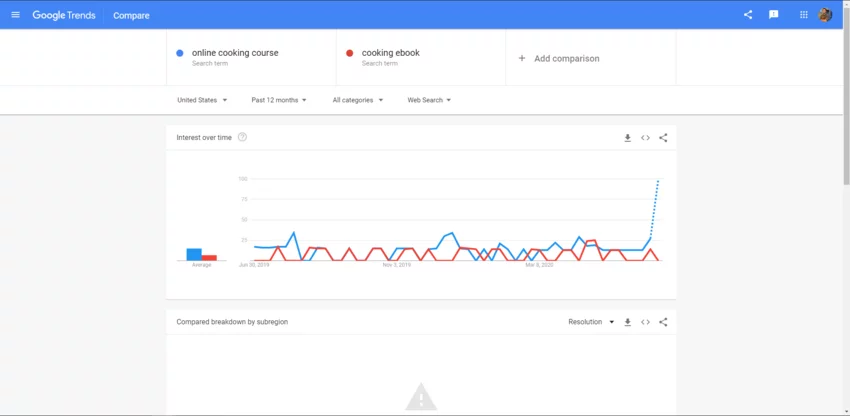
Here’s a snapshot of Google Trends. Here you can compare search terms in various forms in order to find out if there’s any correlation between search terms or if there are any new trends.
After you’ve finished analyzing the industry, it’s time to move on to the next step.
Step 2: Find out who is your customer
Who exactly is your customer?
Believe it or not, this isn’t a million-dollar, but a billion-dollar question.
You want to know who is this person who’s happily enrolling in all of your online cooking classes! All of your customers – they must have something in common!
And indeed they have.
What we need to do here is identify the buyer persona.
According to Hubspot, a buyer persona is a semi-fictional representation of your ideal customer based on market research and real data about your existing customers.
Before launching your digital commerce business, you’ll want to have a clearly defined buyer persona.
Having a buyer persona will help you focus your time, to guide product development, and to allow for alignment across your whole business.
Before creating your first buyer persona, think about what kind of information would you like to know. For example, you may want to find out where do your customers live, how much are they earning, or even how educated they are.
If you’re planning on running smart marketing campaigns, you’ll definitely want to be specific when researching your customers. You’ll need some first-hand information on them.
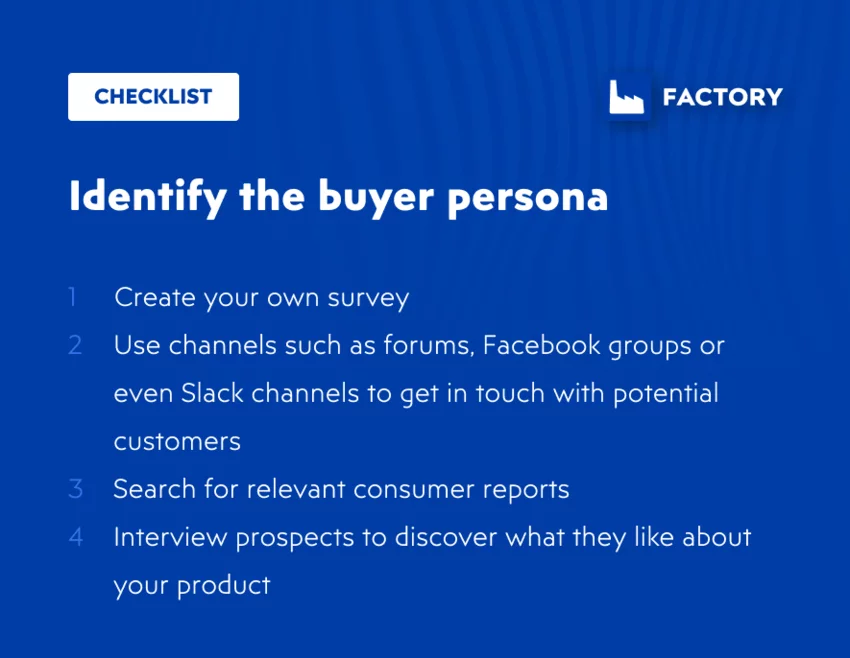
How to research your customers?
There are several different options for you to explore when researching your customers.
And it can all start with a simple Google search.
For the sake of example, let’s say you’re still offering online cooking courses for soon-to-be chefs around the world.
You could search for Facebook groups revolving around cooking and cooking skills. Additionally, you may want to visit a few cooking forums and websites to find out what are your customers talking about on a daily basis.
That’s the information you’re looking for! Now, to get that information, you’ll want to create a survey. A survey is, by far, the most simple method of primary research.
You can create a survey using tools such as Google Forms or SurveyGizmo. And the best thing is that it’s completely free.
When creating your survey, try to get as specific as possible. The more specific questions you ask, the more specific answers you’ll get.
Moving on from the surveys, another method you could use is to analyze relevant consumer reports.
We’ve already mentioned consumer reports, as they’re a great asset when analyzing the industry. But when you’re trying to find out more about your customers – consumer reports are the place to go.
And as we said earlier, be as specific as possible. If you didn’t Google for “online cooking course consumer trends” the last time, now is a good time to do it. You’ll find out that there’s a vast amount of useful information about your potential customers.
When you’ve researched both the industry and your customers, it’s time to take a look at your competitors.
Step 3: Analyze your competitors
It’s no secret that you’ll have solid competitors in every industry.
The key to positioning yourself as a great competitor and avoiding an uphill battle is to analyze your competitors.

There are some things you’ll want to know about your competitors:
- What’s their name?
- Do they have a website?
- How does their website look?
- How does their website work?
- What prices are they setting?
- How are they describing their offerings?
- What are the key features of their products?
These are some questions you’ll want to find an answer to when analyzing your competitors.
Try to get it all written down in a spreadsheet, so it’s accessible to you at any needed time.
And how to build upon this analysis?
Try to identify their strengths and weaknesses. Look for some gaps which aren’t covered by your competitors and beat them to it. List them all down in the spreadsheet.
Also, try to find out who is the market leader. Take a look at how they’re communicating with their audience, what kind of products they’re offering, and what’s their unique value proposition.
If you’re looking for inspiration, your competitors may prove to be an excellent one.
For instance, it could happen that the majority of your audience prefers using mobile devices, but your competitors don’t have a mobile app. This could be a gap you could cover by building an eCommerce mobile app!
To sum up, researching your competitors is a crucial step in starting your digital commerce business and it should be done thoroughly. Try to list at least 10 competitors and see if they have something in common.
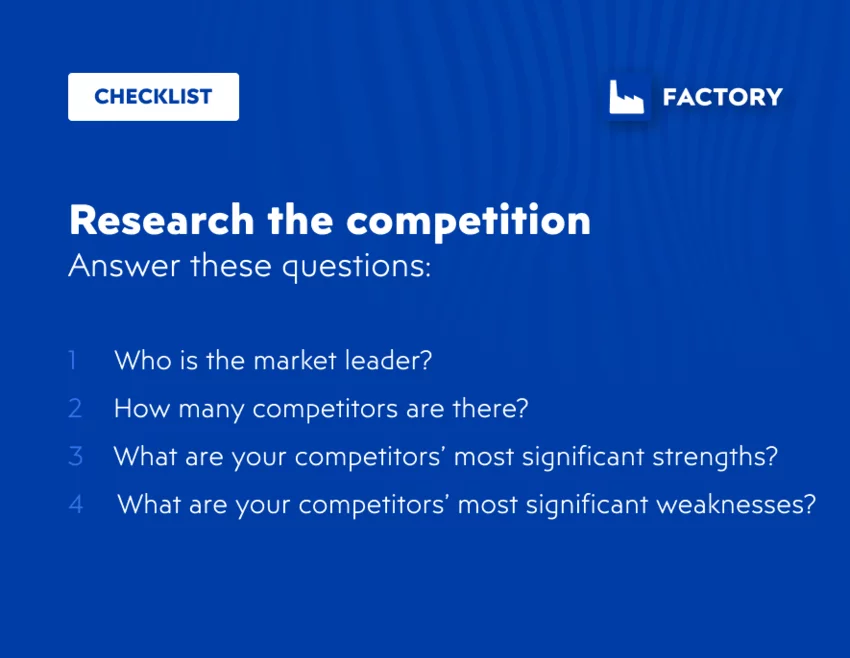
If they do, it could mean that your audience may like to see something similar from you.
To wrap up, let’s head over to the next step in the process.
Step 4: Register your business
Now, this step may seem a bit boring compared to the other steps. Nonetheless, it’s as important as any other step mentioned in the article.
Registering your business will bring you some legal protection and tax benefits, so don’t skip this chapter! It’s time to open a business!
When you’ve registered your digital commerce business, there are a few more things you’ll need to take care of.
Next, you’ll need to name your brand. The business name and the brand name don’t need to be the same, but it will ensure some consistency. It would be great if the brand name fits the niche, but still, it’s not mandatory.
After you’ve determined the name of your business, it’s time to make it legal.
You’ll need to secure all your business licenses and permits in order for your business to have no legal issues.
Required licenses and permits differ from country to country. To find out more about it, contact your local, regional, and even state offices.
Another important thing is – opening a business bank account. You’ll want to have a destination for all the funds your customers are willing to exchange for your great products.
After registering your business, opening a bank account, and solving all the legal issues – it’s time to create a brand.
This is more of a creative task, as it includes establishing a visual identity for your digital commerce business.
By that, we mean that you’ll need to create your logo, determine the colors of your brand, and even establish the font type of your digital commerce business.
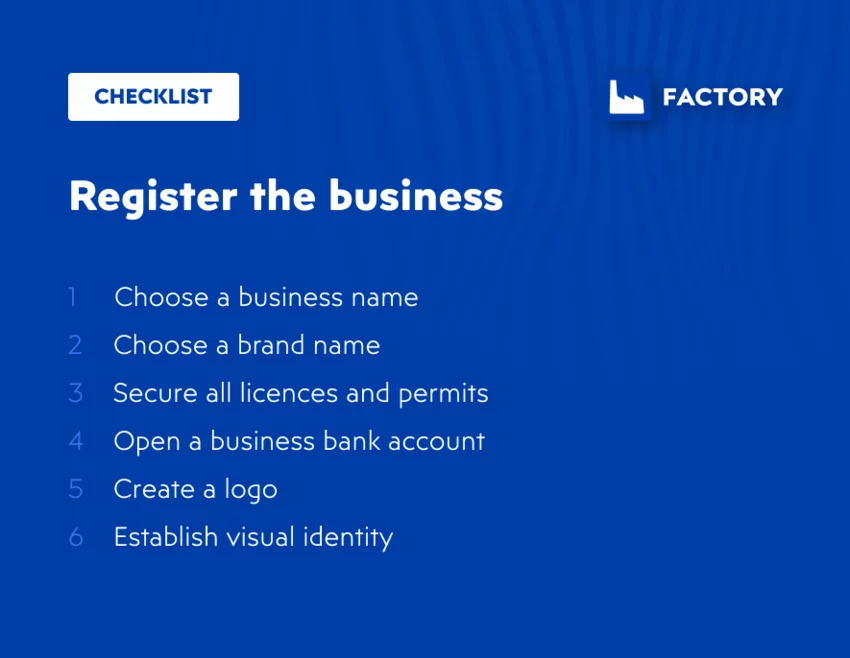
Next, we’ll talk more about the digital products you’ll be offering.
Step 5: Find your digital product
Let’s say you’re still determined to offer your customers online cooking courses.
But, can we get more specific there?
When choosing a digital product for your digital commerce business, try to put in as much research as possible. Are you going to sell courses on cooking Italian food? Or is it going to be a course on cooking Chinese food?
To be fair, it all depends on what do you want to do. But pay attention to current trends. You should check if your product is in a growing niche.
And if you’re still deciding what kind of digital product can you sell – worry not. Here are some examples of digital products you could offer.
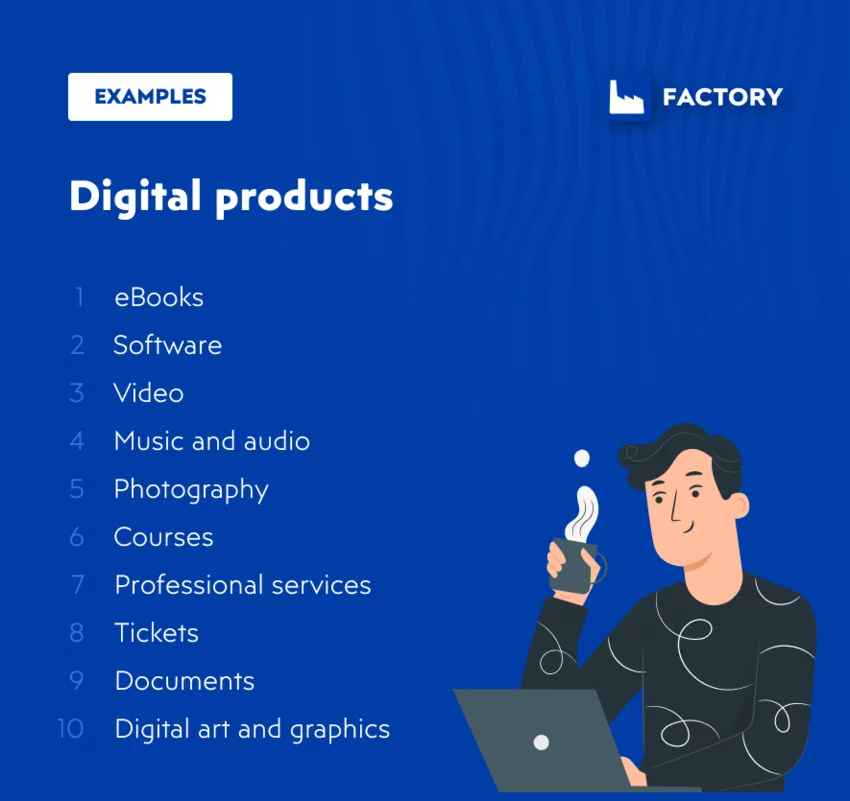
Just to note it once again, digital commerce differs from traditional eCommerce. The main difference lies in the type of products offered.
Digital commerce businesses consist solely of digital products. No tangible goods are being offered, meaning there are no physical products.
Types of digital products
We’ve already listed some examples of digital products, but there are some distinguishable types of digital products we’ll mention.
There are 3 types of digital products we’ll discuss:
Convenience products
This type of product is meant for frequent purchases. There’s little effort in buying and the price of convenience products is usually lower.
For example, we can say for some photographs that they represent convenience products. They are usually not expensive and there’s almost no effort involved in the whole buying process.
Shopping products
Shopping products are bought less frequently than convenience products. But still, their price is higher and there’s a bit more effort in the buying process.
We could say that an eBook about cooking Italian food could be a shopping product. It’s a bit more pricey than a photograph.
Specialty products
These products are your most valuable ones. An excellent example would be a masterclass course on cooking Italian food. Your eBook customers will likely get interested in the topic and they’ll want to know more.
This is your chance to upsell your customers and offer them the best possible product.
Specialty products are more expensive than previous ones and demand for these products is somewhat lower compared to convenience and shopping products.
Nonetheless, these products are the ones that require great focus.
But what about some future products you’re currently not offering?
Future products
You’ve already sold a few eBooks and your customers are loving it.
Could you offer them anything else to fulfill their needs?
There are some types of product offerings you want to look into, such as:
- Core products
- Cross-selling products
- Upselling products
- Tripwire products
Each type of product offering has its own unique purpose.
Core products are the base of your offer, they are your main focus. On the other hand, a tripwire product is a product you’re using to attract more customers.
For example, let’s say an eBook is a tripwire product, while an online course may be a core product.
Try to build your product strategy around these offerings. Start with a basic tripwire offer and work on upselling your customers and providing them with as much specialized knowledge as you can.
When talking about digital products, there are some key advantages when compared to traditional products.
They don’t need to be stored in a warehouse, they don’t have high production costs, and they’re easily distributed to all of your customers.
All of your digital products could be stored in cloud storage, meaning that they’re easily accessible at any given time.
Nonetheless, you’ll want to pay attention to finances.
Try to answer some of these questions, as the answers will give you some more clarity!
- What’s the target price for my product?
- How much does it cost to produce my product?
- What is the net profit per product?
- Am I going to offer some discounts and how will they affect my profits?
Now, when you’ve answered these questions and decided on which digital products you’re going to offer, it’s time to set up a marketing strategy.
Step 6: Determine your marketing strategy
To determine your marketing strategy is no easy task, so tread carefully and take notes.
How are you going to drive traffic to your website and acquire new customers?
We’ll give you a few ideas, so don’t worry. Carrying out a marketing strategy requires some budget and time, but when planned right, it will bring you great results.
“If you fail to plan, you’re planning to fail.”
- Benjamin Franklin
So, to plan your strategy, you’ll need to have a deep understanding of your customers. If you’ll remember, we’ve already discussed the buyer persona previously in the article.
Having a detailed buyer persona will help you direct your marketing efforts in the right direction.
To revise, here are some questions you may ask your yourself:
- How old are your customers?
- Where do your customers live?
- How educated are your customers?
- How much are they earning?
- What are their biggest challenges?
There’s much more to buyer personas than these questions, so take your time and get to know them!
When you’ve done it successfully, it’s time to choose which channels you’re going to use to promote your digital commerce business!

Choosing a marketing channel
There have never been more marketing channels to choose from, but the real challenge is choosing the right one for your digital commerce business.
We can divide all marketing channels into 2 main categories – organic and paid marketing channels.
Let’s see some examples of organic and paid channels.
Organic marketing channels
These are non-paid channels, but they require a specific set of skills and time to be executed successfully.
Even though they’re non-paid channels and their results may not be visible in the first few weeks (or even months), but the results of organic marketing activities may be incredible.
Let’s see what kind of organic channels are there:
- Social media profiles
Managing social media could help you greatly in establishing solid relationships with your customers. Facebook, LinkedIn, and Twitter are just some of the social media channels you may use to execute your strategy.
- Search engine optimization (SEO)
Search engine optimization refers to increasing the traffic on your website by increasing the visibility of your website on a search engine, such as Google.
By creating high-quality content and optimizing it for the search engine, the search engine will show your content to a larger audience. The better your content is, the more website traffic you get.
With that in mind, don’t trade the quality of your content for quantity. They are both equally important.
Also, try to get familiar with some newer trends in search engine optimization, such as voice search optimization!
- Content marketing
Similar to search engine optimization, the goal of content marketing is to attract new customers and improve relationships with the current ones.
Concretely said, content marketing is focused on creating and distributing content to targeted audiences online. It’s a great way to generate more leads for your digital commerce business and increase brand awareness.
Now when we’ve discussed organic marketing channels, let’s take a look at the paid channels.
Paid marketing channels
Paid marketing channels, compared to organic channels, have the potential to bring in the results much faster.
However, paid marketing activities come with a certain amount of risk. If not executed correctly, you could be facing a new and unexpected challenge.
Let’s see what kind of paid marketing channels could you use to promote your digital commerce business!
- Google Ads
Google’s advertising platform is one of the most popular nowadays. It allows you to promote your products on YouTube, Google Shopping, Google’s search engine result page, etc.
Managing Google Ads requires concrete knowledge of the platform, and Google made sure that information is easily accessible! Check out their official courses for Google Ads.
- Affiliate advertising
Affiliate advertising refers to partnering up with other businesses to promote your products. They’re going to provide exposure for your digital products for a fixed fee or a percentage of overall affiliate sales.
- Facebook Ads
Facebook’s advertising platform is the most popular social media advertising platform nowadays. Have in mind that Instagram is owned by Facebook, so by using Facebook Ads platform, you can launch ads on both Facebook and Instagram from the same account!
According to Statista, Facebook has more than 2.6 billion monthly active users, meaning that you could reach 2.6 billion potential customers using Facebook Ads!
Also, Instagram has more than 1 billion monthly active users, meaning that you could reach audiences that aren’t even using Facebook as such.
- Influencer marketing
Influencer marketing is a paid form of social media marketing. It refers to cooperation between businesses and influencers who have expert knowledge in their respective fields.
It has proven to have a great ROI, so take your time and determine would it be useful for you to leverage influencers in your marketing campaigns.
If you’re looking to develop an influencer marketing strategy, check out Sprout Social’s resources on influencer marketing strategy. It may come extremely handy!
There are many different options for you to choose from when developing a marketing strategy for your digital commerce business.
The real challenge here is to find the best mix of paid and organic channels. It all depends on your goals and available resources.
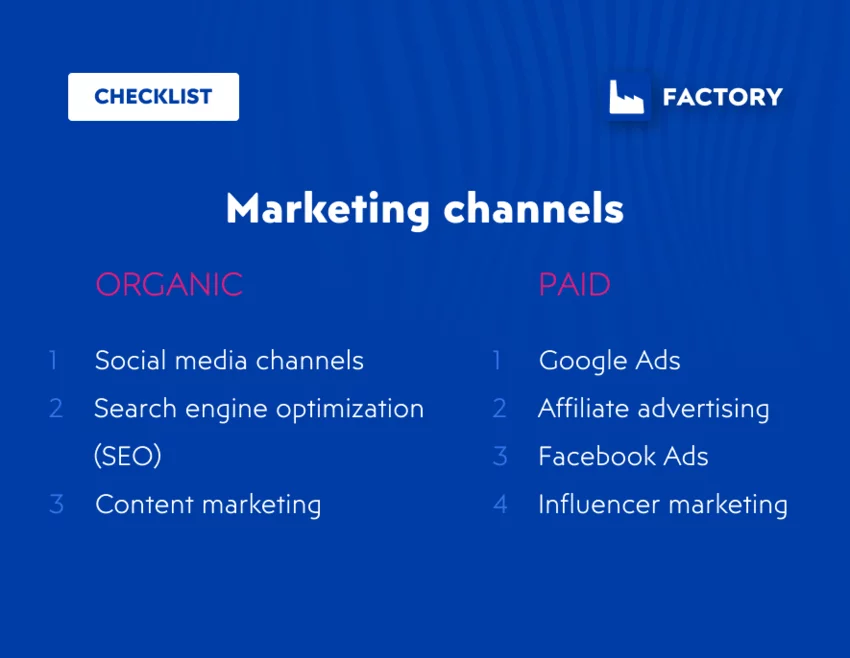
Take your time when developing your marketing strategy, as it’s a crucial part of the success of your digital commerce business!
Also, it’s important to note that you can’t do everything by yourself. You’ll need to identify what kind of skills you need to get your business up and running.
There are several different common roles in digital commerce businesses, such as:
- Customer service specialists
- Copywriters
- SEO specialists
- Facebook Ads specialists
- Google Ads specialists
- Social media marketers
- Etc.
You can do everything in your power to obtain these skills, but if you want to avoid burnout, consider hiring new employees with specific skill sets.
Set SMART goals
Setting SMART goals is of the highest importance when developing your marketing strategy.
To break it down, SMART goals refer to:
- S – specific
- M – measurable
- A – achievable
- R – realistic
- T – timely
To clarify it a bit more, let’s go through an example of a SMART goal.
“I will increase my business’ revenue by 20% in the next 3 months by increasing my advertising by 10%.”
- Specific – You’ve clearly defined the goal of increasing.
- Measurable – Success can be measured by the increase in revenue expressed in percentage
- Achievable – By increasing your advertising budget by 10%, it’s possible to increase your revenue by 20%
- Realistic – You’ve set the goal in a way that it’s realistic; an increase in the advertising budget usually leads to an increase in sales revenue
- Timely – You’ve set a deadline for achieving your objective in the next 3 months
While your goals may be challenging, using the SMART framework will help you organize your activities. You’ll be following a structured plan to reach any goal you’ve set.
Using SMART goals will help you define the next steps you need to take, what kind of resources you’ll need to achieve your goals, and how you’re going to set milestones.
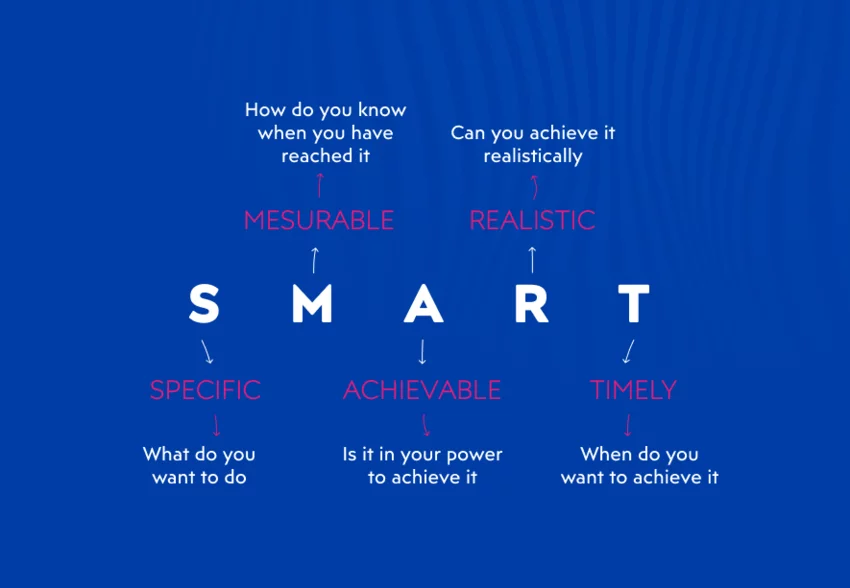
To help you achieve your goals and effectively measure your impact, consider using some analytics tools, such as Google Analytics. Check out our article on eCommerce analytics that will clarify some hot questions. You’ll find out what you should measure and what kind of metrics you should avoid in your analysis!
When you’ve set your goals and defined your marketing strategy, it’s time to get busy and start building your website!
Step 7: Build the website for your digital commerce business
The next step in the process of starting your digital commerce business is creating the website.
To find out what kind of platform is going to work out best for your business, pay attention to some specific aspects, such as:
- Loading speed
- Available features
- Price
- Payment gateways
- SEO-friendliness
- Etc.
When building a digital commerce business website, you’ll want to be familiar with all of the features of an eCommerce website.
We’ve got you covered here! There is already a resource on our website waiting for you to go through it and plan what kind of features you’ll include on your website.
When discussing building a website, we need to agree that it is not an easy task. We’re ready to take over that and handle building the website for you, so you can focus on other important aspects of your business.
We’ve taken a liking in Pimcore, a future-proof platform with extraordinary data management. To get more information on Pimcore, check out one of our guides and articles.
To move on, let’s check out how Pimcore compares to some other popular platforms such as WordPress and Sitecore.
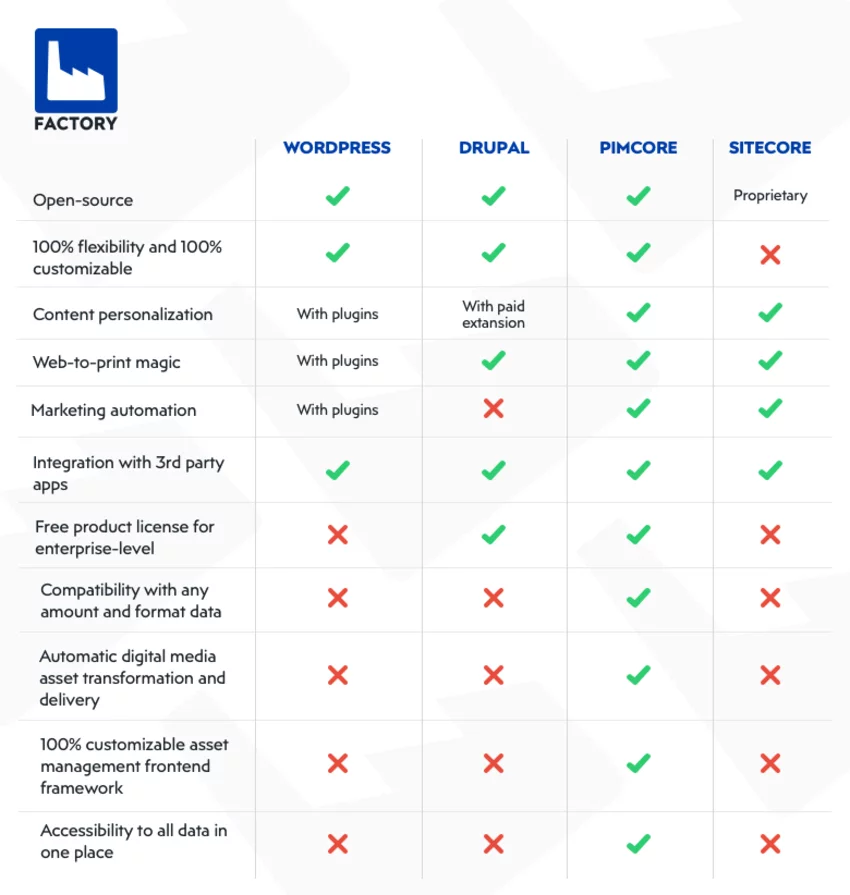
When choosing a platform for your digital commerce business, you’ll want to compare the platforms on many different levels. For instance, security, content management capabilities, and costs are some of the key aspects you’ll want to assess.
Take a look at one of our previous articles where we compared WordPress with some of its alternatives. And if you’d like to see a direct Pimcore vs. WordPress comparison, we’ve got you covered!
Moreover, to find out out how can you leverage Pimcore in your digital commerce business, visit our blog! There’s some pretty useful and actionable information waiting for you.
And finally, after you’ve built your website and prepared all of your strategies – it’s time to launch your business!

Step 8: Provide exceptional customer service
When you’ve launched and already acquired a certain amount of users, it’s important to provide them with great customer support.
It can be challenging for some, as you’re not going to interact with your customers face-to-face.
To overcome this challenge, we’ll present you with some best practices you’ll be able to implement in your digital commerce business in no time!
Let’s start!
Be quick to help your customers
When some of your customers face a challenge, they’ll instantly turn to you for help.
Your customers love to shop online because of the convenience and when they have a question, they want an answer as soon as possible.
In a situation where your customers can finish their shopping in just a few clicks, they won’t appreciate waiting for answers.
So, focus on minimizing your average response time.
You could leverage tools such as live chat or chatbots to provide instant answers for your customers’ questions.
Digital.com gathered a list of best help desk software, so check it out and see what kind of help desk software suits your needs!
The more your customers wait, the more they get distracted, and eventually – they leave your website.
Try avoiding those scenarios by getting back to your customers in a matter of seconds!
Leverage social media channels
Social media serves as another channel for customer service.
Your customers may report some issues or even ask questions using their social media accounts. Be quick to address your customers’ issues and answer their questions as quickly as possible.
Customer service experts will make the best out of these situations and even further your relationship with your customers.
Use self-service options
If your customers have encountered an issue that was already reported by several customers, it may be a good idea to include a FAQ section on your website.
Besides FAQ, consider including all of the useful resources and supporting documents so your customers can find a solution without engaging a customer service specialist.
This kind of approach will minimize the number of customers reporting issues and increase their satisfaction overall.
Keep your digital commerce business up at a high level
After soaking up all of the information from this article, you’ll have a better understanding of how a digital commerce business works and how to set it up. To keep with the latest trends and best practices, we’ve prepared for you a list of 10 eCommerce blogs you should follow. P.S. Our blog is also filled with some great info on eCommerce so don’t miss out!
Starting a digital commerce business is a long and challenging journey, but a rewarding one.
And it’s definitely not a one-man job. You’ll want all the help you can get.
If you’re looking for an experienced partner, we’d be happy to help you out! We’ll gladly take care of your digital presence and build your integrated eCommerce business together!






